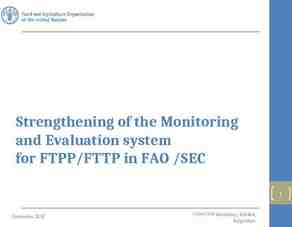School Counselors Taking the Lead Virginia School
11 Slides6.25 MB

School Counselors Taking the Lead Virginia School Counseling Leadership Summit 2018

It’s more than a name change Guidance Counselor Teachers inherited position or took limited number of additional classes for counseling certification School Counselor Hold a Master’s Degree or higher in Counseling (48-60 graduate credit hours) Meet VA Board of Counseling’s degree requirements for Licensed Professional Counselors (LPC) Exceed VA’s educational requirement of Qualified Mental Health Professionals (QMHP-C) working with children and adolescents SB1117- Mandatory training in the recognition of mental health disorder and behavioral distress, including depression, trauma, violence, youth suicide, and substance abuse.

It’s more than a name change Guidance Counselor School Counselor Vocational movement- Occupational assessment, employment services, assist students in planning for future employment or college Academic Achievement, College & Career Readiness, Social/Emotional Development and Mental/Behavioral Health Provided a reactive service for some students Provides a comprehensive program, driven by data that includes 8 different delivery methods of counseling services to all students Pointed students in a productive direction and provide “quick fix” to problems Provides education, prevention, early identification, and intervention/crisis response services to all students

Today’s students 1 in 4 children have been exposed to a traumatic event that can affect learning and/or behavior. 1 in 5 children from birth to 18 years has a diagnosable mental disorder. Onset of mental illness may occur as early as 7-11 years old, and half begin by age 14 Suicide is the second leading cause of death for ages 10-24 Children who struggle with mental health may miss copious amounts of school, and their rates of suspension and expulsion are 3x higher than children without a mental health concern or illness. Of school-aged children who receive any behavioral or mental health services, 70-80% of them receive them only at school. Student’s unmet mental health needs pose barriers to development, learning, and compromise school safety.

DIRECT COUNSEILNG School Counseling Services Counseling Curriculum Small Group Counseling Individual Counseling Crisis Response Individual Student Planning Consultation Collaboration Referral

School Counseling Get Results Schools with lower school counselor to student ratios had statistically significant lower rates of student suspensions and fewer disciplinary incidents (Lapan, Whitcomb, & Aleman, 2012) Students with access to school counselors and comprehensive school counseling programs are more likely to achieve academically and behaviorally; particularly students in high-poverty schools (Lapan, Gysbers, Bragg, & Pierce, 2012) A comprehensive school counseling program in every elementary, middle, and high school is a necessary component of any effort directed at school safety (Nims, 2000) Students in schools with more fully implemented school counseling programs had a more positive perception of school climate and safety within their school (Lapan, Gysbers, & Petroski, 2001). School counselors can be catalysts for identifying students with depression and suicidal thoughts (Erickson & Abel, 2013)

Increase student access to school counselors Utilize school counseling staff appropriately

Recommendations Standards of Quality Revision (§ 22.1-253.13:2. Standard 2. Instructional, administrative, and support personnel) K. Local school boards shall employ one full-time equivalent school counselor position per 250 students, with no caseload being larger than 300 in grades kindergarten through 12. Standards of Accreditation Revision (8VAC20-131-240. Administrative and Support Staff; Staffing Requirements) D. The counseling program for elementary, middle, and secondary schools shall provide a minimum of 80% of the time for each member of the school counseling staff devoted to the delivery of direct counseling services to students.









